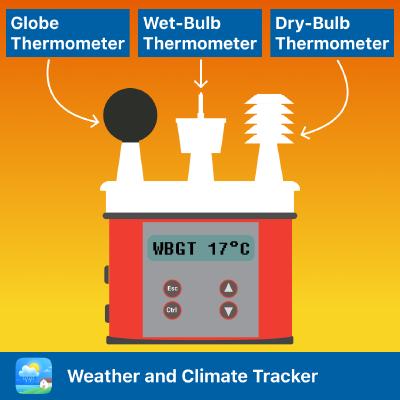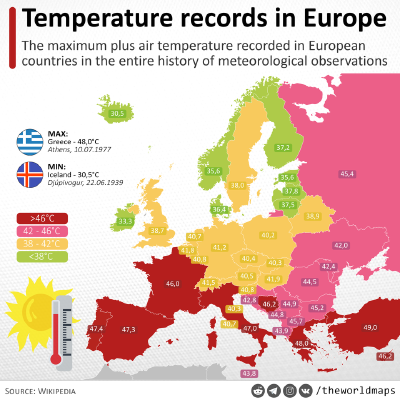
[Earth]

[Earth]
In order keep safe when it’s hot outside, it’s important to know how hot it really feels. Scientists created something called the Wet Bulb Globe Temperature or WBGT to measure the heat stress in the air. Imagine you have three thermometers: a regular one, a wet one, and one inside a shiny black ball.
Read more
[Earth]
What is a mirage and where does it come from? Mirage is undoubtedly one of the most mysterious atmospheric phenomena that has always been associated with secrets and legends. But in reality, the mirage is easily explained from a scientific point of view. It appears when the air near a highly heated surface (about 60-70 °C) also heats up and becomes inhomogeneous.
Read more
[EARTH]
Europe is home to diverse landscapes, and its windy places offer exciting experiences for wind sports enthusiasts and nature lovers alike. Let’s discover ten of Europe’s windiest places, from the sunny shores of Spain to the rugged shores of Norway.
Read more
[Earth]
Not just a simple lightning. Lightning strikes can look not only frightening, but also unusual. This is exactly what can be said about the “Saint Elmo’s fire”. This type of lightning in the form of luminous beams or tassels appears usually during a severe thunderstorm at the ends of tall buildings, on spiers, ship masts, tops of high trees or rocks.
Read more
[Earth]
Hottest temperatures ever recorded in Europe. The numbers are most likely already outdated in 2023 but should still give one the overall idea.
Read more
[Earth]
Can an island move? Yes, but only if it’s an unusual floating island located in the Lake Pond in Massachusetts. This football-sized island is made up of moss and stays afloat because of the gases these very mosses produce. The floating island does not have an exact route; it moves along the lake rather randomly and sometimes even destroys buildings and moorings by approaching too close to the shore.
Read more